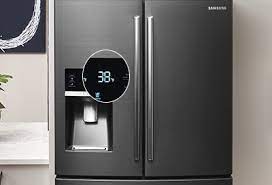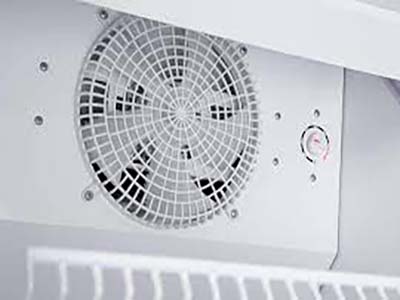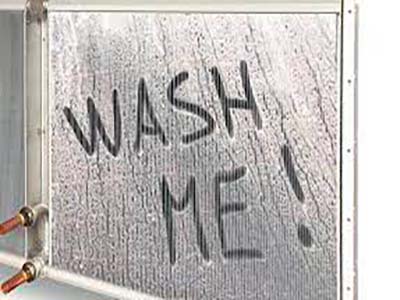Managing Fridge Condensation: A Comprehensive Guide
Your refrigerator plays a pivotal role in keeping your food fresh and safe to eat. However, sometimes it can develop condensation issues, leading to moisture buildup inside the fridge. This can be not only frustrating but also potentially harmful to your food and appliance. In this comprehensive guide, we’ll explore the causes of fridge condensation and provide practical solutions to help you manage and prevent this issue effectively.

Understanding Fridge Condensation
Fridge condensation can be a perplexing issue, often leaving homeowners baffled. This phenomenon occurs when moisture forms on the interior surfaces of your refrigerator, making it seem like a miniature rainforest in there. Understanding the nature of fridge condensation is the first step towards effectively managing it.
Condensation in your fridge isn’t just an aesthetic problem; it can have consequences for both your appliance and your stored food. If left unchecked, it can lead to mold growth, food spoilage, and even damage to internal components. Additionally, the excess moisture can strain your fridge’s energy efficiency.
In this section, we’ll delve deeper into the mysteries of fridge condensation, its potential repercussions, and the importance of tackling it promptly.
The Importance of Managing Condensation
Condensation in your fridge is like an unwelcome guest that can disrupt the harmony of your kitchen. Beyond the annoyance of water droplets on your food containers and shelves, managing condensation is essential for several reasons.
Firstly, excess moisture can lead to a prime breeding ground for mold and bacteria. These unwanted microorganisms not only affect the quality of your food but can also pose health risks. Furthermore, the presence of mold can be challenging to eradicate, requiring extensive cleaning efforts.
Secondly, condensation can cause premature food spoilage. When moisture accumulates on the surfaces of fresh produce and leftovers, it can accelerate their deterioration. This means more wasted food and money down the drain.
Lastly, a persistently damp interior can harm your refrigerator’s efficiency. The appliance may need to work harder to maintain the desired temperature, leading to increased energy consumption and higher utility bills.
In the following sections, we’ll explore the common causes of fridge condensation and strategies to prevent it from wreaking havoc in your refrigerator.
Common Causes of Fridge Condensation
Condensation in your fridge can be frustrating, but understanding its common causes is key to resolving the issue. Let’s dive into the overview of common culprits behind fridge condensation.
Overview of Common Culprits
1. Temperature Fluctuations: Rapid changes in temperature, like frequently opening the fridge door, can create the ideal conditions for condensation. When warm, humid air enters the fridge, it can encounter cold surfaces, causing moisture to form.

2. High Humidity: If the humidity level inside your fridge is too high, moisture is more likely to condense on cold surfaces. This can happen if you store warm or uncovered food items that release moisture.
3. Poor Ventilation: Inadequate airflow within the fridge can trap moisture, making it easier for condensation to occur. Blocked vents or overcrowded shelves can hinder air circulation.
4. Faulty Seals: Damaged door seals or gaskets can allow warm, moist air from the kitchen to enter the fridge. This air can condense on cold surfaces, leading to moisture buildup.
5. Inaccurate Temperature Settings: Incorrect fridge and freezer temperature settings can contribute to condensation. If the fridge is too cold, excess moisture can accumulate.
DIY Troubleshooting
How Temperature and Humidity Impact Condensation
Causes:
- Inaccurate Temperature Settings: Incorrect fridge and freezer temperatures can contribute to condensation.
Solutions:
- Adjust Temperature Settings: Ensure your fridge and freezer are set to the recommended temperatures to prevent condensation.
Improving Ventilation
Enhancing Airflow to Prevent Condensation

Causes:
- Blocked Air Vents: Obstructed vents can impede airflow, leading to moisture buildup.
Solutions:
- Rearrange Contents: Organize your fridge to allow better air circulation.
Insulation and Sealing
Preventing External Factors That Contribute to Condensation
Causes:
- External Humidity: High humidity in your kitchen can affect your fridge’s performance.
Solutions:
- Control Room Humidity: Use a dehumidifier in your kitchen to maintain ideal conditions.
Component Inspection
To effectively manage and prevent fridge condensation, it’s essential to have a clear understanding of the key components that make up your refrigerator. These components play vital roles in maintaining the optimal temperature and humidity levels inside your fridge.
Let’s take a closer look at some of the key fridge components:
1. Compressor: The compressor is the heart of your fridge’s cooling system. It circulates refrigerant gas, compressing it to remove heat from the interior, ensuring a cool environment.
2. Condenser Coils: These coils are located on the back or bottom of the fridge and help release the heat absorbed by the refrigerant. Keeping them clean is crucial for efficient heat dissipation.

3. Evaporator Coils: Found inside the freezer and fridge compartments, evaporator coils help in cooling by absorbing heat from the air inside. They are essential for maintaining the desired temperature.
4. Thermostat: The thermostat regulates the temperature inside the fridge and freezer by controlling the compressor’s operation. It ensures that the set temperature is maintained.
5. Fans: Fans help circulate cool air throughout the fridge and freezer compartments, ensuring even temperature distribution. Proper airflow is crucial in preventing condensation.
6. Drain Tube: The drain tube carries away excess moisture and condensation from the fridge. If it becomes clogged, it can lead to water buildup and potential condensation issues.
Door and Gasket Maintenance
Importance of Well-Maintained Door Seals
Causes:
- Worn Gaskets: Damaged gaskets can lead to air leaks and condensation.
Solutions:
- Regular Inspection: Regularly check and replace worn door gaskets to ensure a proper seal.
Smart Food Storage Practices
How Food Placement Can Reduce Condensation
Causes:
- Uncovered Food: Uncovered food releases moisture into the fridge.
Solutions:
- Cover Food: Use airtight containers to keep food fresh and reduce moisture release.
When to Seek Professional Help
Signs That Require Professional Attention
Causes:
- Appliance Malfunctions: Internal issues with your fridge can contribute to condensation problems.
Solutions:
- Call a Technician: If you suspect appliance issues, seek professional assistance.
Preventive Measures
Strategies to Prevent Future Condensation Issues
Causes:
- Neglected Maintenance: Lack of routine maintenance can lead to condensation problems.
Solutions:
- Regular Maintenance: Implement a maintenance schedule to keep your fridge in top shape.